Coronavirus: Are you ready for some football?
Hello Quartz readers,

Hello Quartz readers,
Before we begin today, let’s just stop and look. at. this. baby.
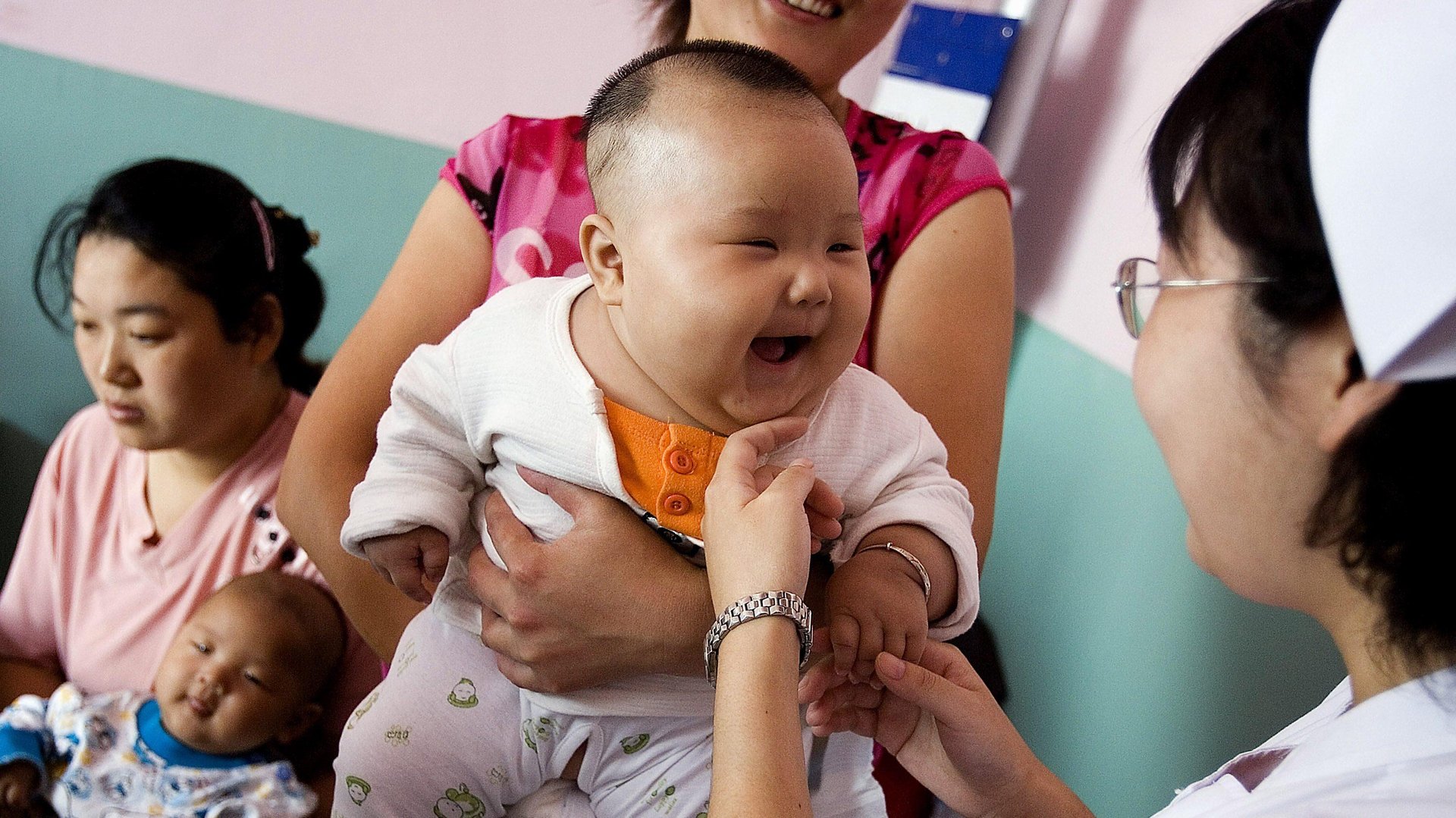
What joy! What glee! What blissful cluelessness about coronavirus!
This photo comes from our story on the collapsing global birth rate, and why it won’t save us from climate change (✦ Quartz member exclusive). This week Quartz members are also reading about a new mindset for success—there’s a test, and it involves eggs—and the hidden downside to standing desks.
Not a member yet? With our limited-time summer sale, you can snag 50% off your first year, which comes with complete access to Quartz articles, field guides, presentations, and virtual events.
Okay, let’s get started.
Dropping the ball
Major League Baseball kicked off a truncated 2020 season last week, and it’s already falling apart.
Seventeen members of the Miami Marlins tested positive for Covid-19 in recent days, forcing the team to cancel its opener against the Baltimore Orioles. More outbreaks are a near certainty, as a number of other prominent players have also tested positive.
Unlike the National Basketball Association and National Hockey League, the MLB’s pandemic-shortened season is not taking place inside a “bubble” designed to limit contact between players, staff, and the outside world. MLB players are flying across the country, reusing locker rooms, and interacting regularly with people outside the league.
The National Football League also plans to conduct its 2020 season without a bubble, and will even allow some fans at games. The league’s chief medical officer said in June that a bubble would not be “practical or appropriate,” and the NFL has yet to outline many specific policies to limit the spread of Covid-19.
This is a recipe for disaster.
NFL organizations are much bigger and more complex than teams of any other American sport. Rosters are far larger, teams employ more staff, and injuries are more prevalent. The sport itself—predicated on humans grabbing and tackling each other in close quarters—isn’t exactly conducive to stopping the spread of a highly contagious disease.
US infectious diseases expert Anthony Fauci has said repeatedly the NFL should implement a bubble if it wants to have a season, and the NBA and NHL bubbles have held up relatively well so far. Out of 348 NBA tests last week, zero were positive for Covid-19. Just two of the NHL’s 800 players tested thus far have been positive. European soccer leagues have managed to safely resume play even without a bubble, because, unlike the US, the countries where they play have the virus under better control.
The MLB season is a uniquely American blunder. And the NFL season, should the league learn nothing from baseball’s error, is doomed to be a catastrophe.
Pandemic priorities
Some products become a lot more valuable when you are forced to sit at home all day due to a pandemic. A serendipitous study of consumers in the UK tells us exactly which ones.
From Feb. 27 to March 3, economists Diane Coyle and David Nguyen conducted a survey of over 10,000 adults in the UK, asking how often they used 30 products and services—and how much they valued them. Once the scope of the pandemic became clear, they ran the same survey again on May 14.
The shifts in product use were dramatic. The share of people who said they had ever used online grocery services grew fastest, from 50% to 59%. The other products with increases of four percentage points or more included Skype, Messenger, Netflix, WhatsApp, and Facebook, all methods of communicating online. The biggest drops were for printed newspapers, Google Maps, and the radio. (You can see the full list here.)
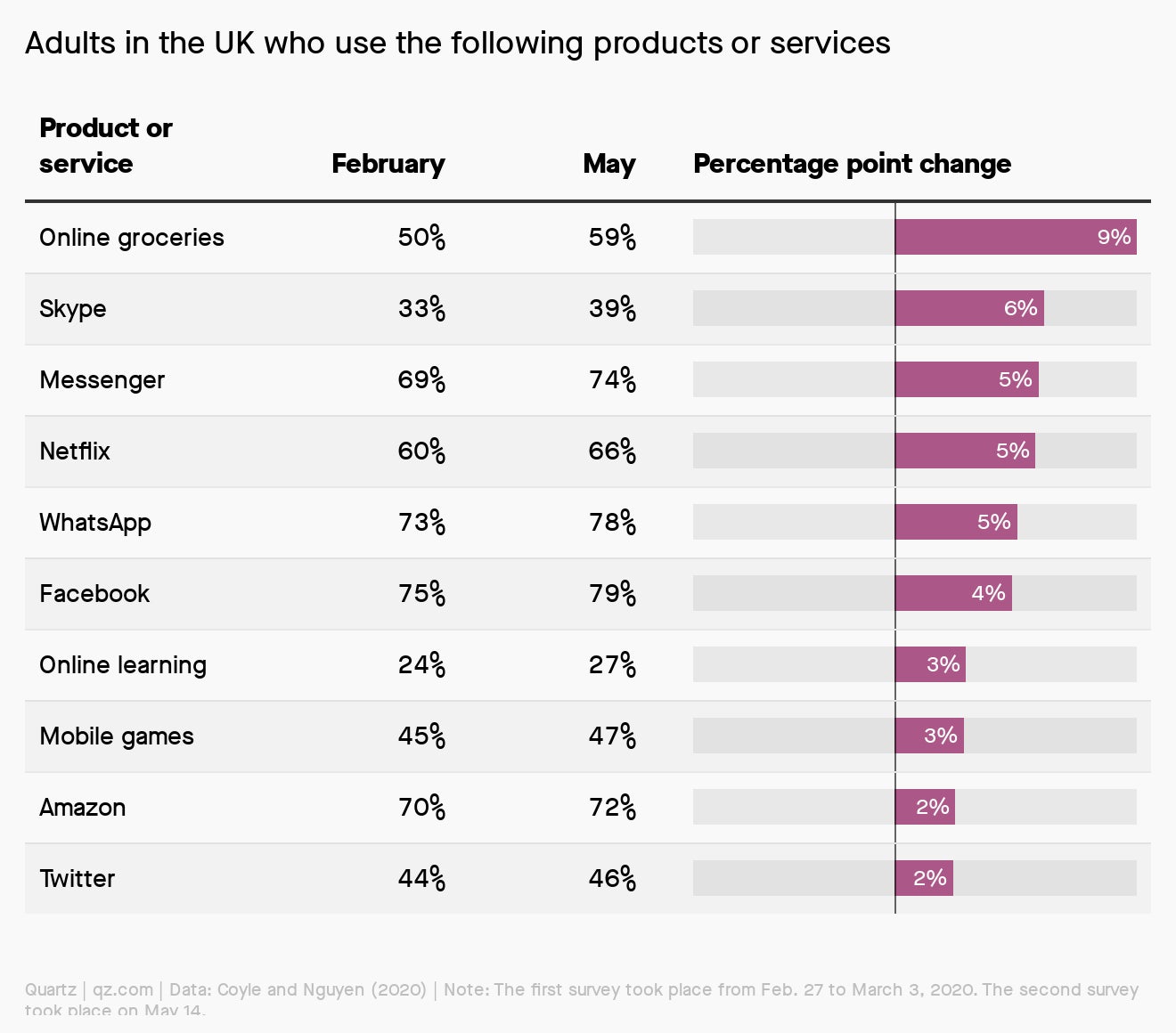
Welcome to my layers
The efficacy of a cloth mask depends on how it’s made. While many you can buy today are constructed with simple cotton, the WHO recommends that non-medical fabric masks have three layers of fabric, each made of a different material to serve a different protective role. Here’s how to layer up:
- First layer: Stay comfy, trap droplets. The layer of the mask that covers the nose and mouth should be cotton, or a soft material that absorbs water, recommends Larry Chu, an anesthesiologist at Stanford University who co-authored a paper cited by the WHO’s guidelines.
- Second layer: Increase filtration. The middle layer should be something like the polypropylene found in reusable grocery bags. Synthetic, non-woven materials like this are smoother and less porous than pure cotton. (Fewer pores means extra protection against any droplets coming from the wearer’s nose or mouth.)
- Third layer: Resist water, keep it breathable. The outermost layer should be made out of some kind of polyester-cotton blend or nylon, like the material used in exercise clothes, rain gear, or pantyhose. This layer’s most important job is to keep the wearer’s droplets inside the mask.
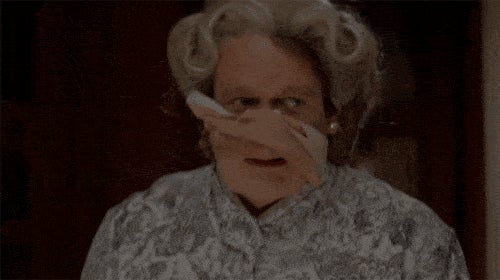
Not mad, just disappointed
The kids are headed home. About 35% of Americans in their 20s lived with either their parents or grandparents in June 2020, according to data from the US’s monthly employment survey. That’s up from just over 30% in February 2020, before the pandemic reached the US.
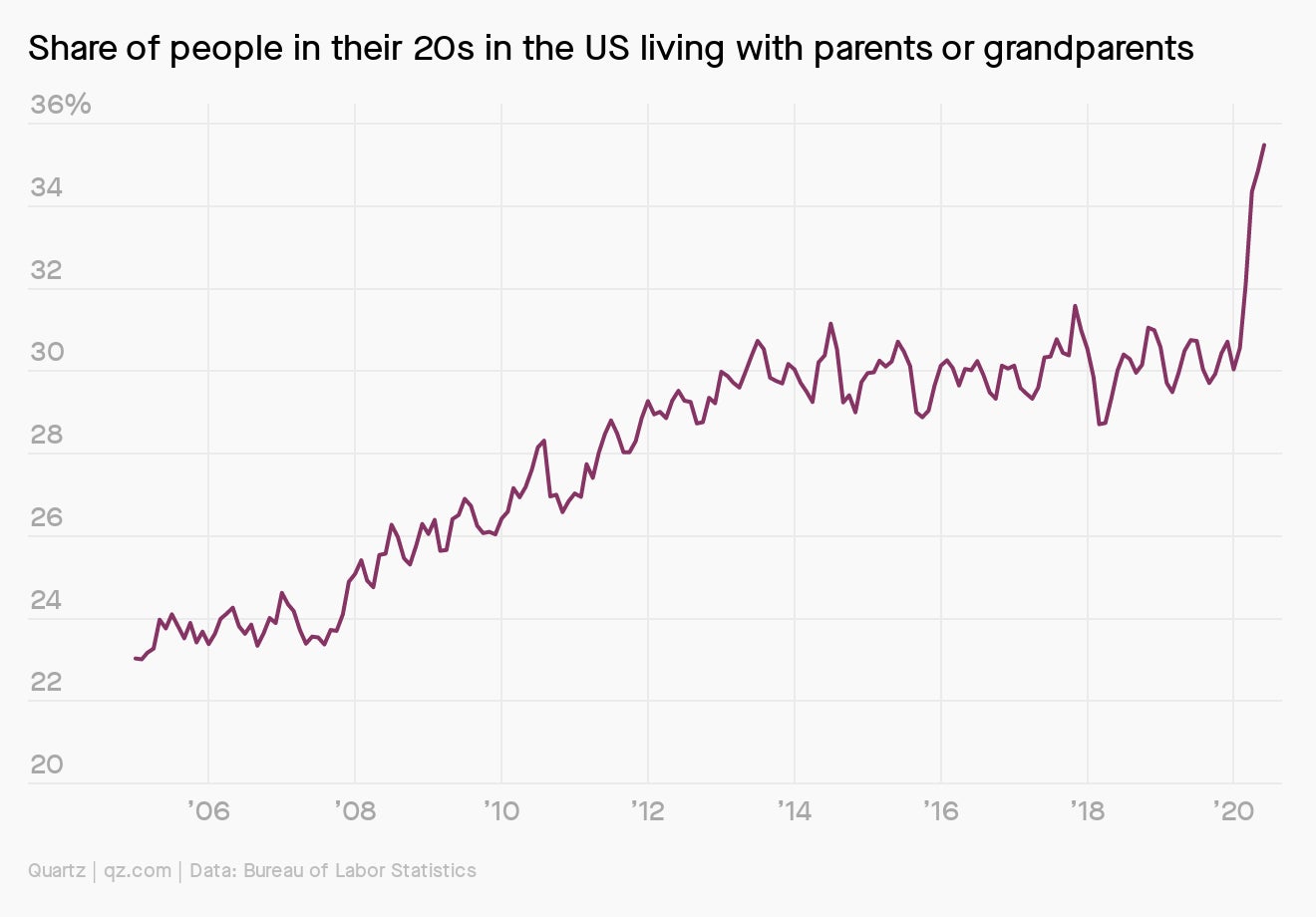
Why it’s important: The economic effects of Covid-19 are hitting young US workers hard. The share of employed 20- to 29-year-olds shrank by about 11% from February to June, compared to about 6% for the population 30 and older.
The exodus could even impact housing prices. Zillow estimates that young adults returning home represent about 1.4% of the overall US rental market, and almost 2% of the market in cities like Austin, Texas and Nashville, Tennessee. It’s possible that this decreased demand for housing will slow rental price increases.
Now screening
Parents in India, meanwhile, want their kids to have more screen time—at least while schools remain closed. Nearly 70% of parents who responded to a survey by LocalCircles, a community-led social media engagement platform, said their children need to spend more time with online classes.
This is in part because the central government has proposed a cap on the duration of these classes. According to the guidelines, pre-primary students should not have more than 30 minutes of screen time each day. For grades 1 through 8, students should attend no more than two sessions of 30-45 minutes each, and high schoolers—grades 9 through 12—should attend no more than four.
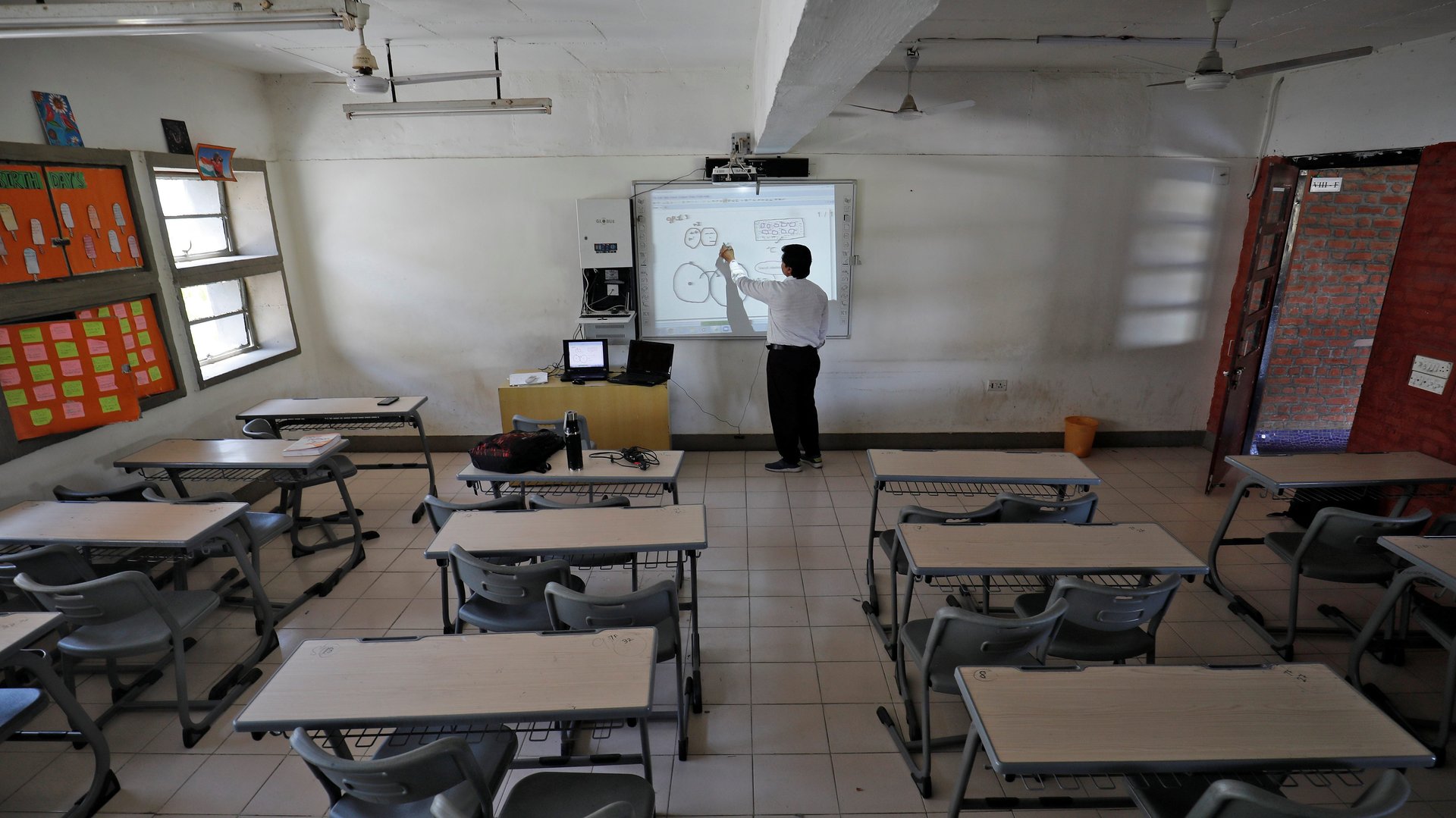
Essential reading
- The latest 🌏 figures: 16.5 million confirmed cases; 9.6 million classified as “recovered.”
- Lessons plan: Nigerian schools are adopting online learning.
- Get me out of here: Covid-19 is great for US used-car sales.
- So sue me: Republicans are fretting over coronavirus lawsuits.
- Game on: Should your next home-office chair be an esports gaming chair?
Our best wishes for a healthy day. Get in touch with us at [email protected], and live your best Quartz life by downloading our app and becoming a member. Today’s newsletter was brought to you by Adam Epstein, Dan Kopf, Katherine Foley, Manavi Kapur, Katie Palmer, and Kira Bindrim.